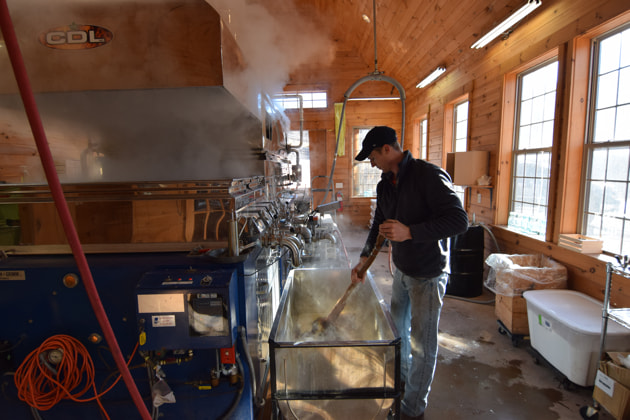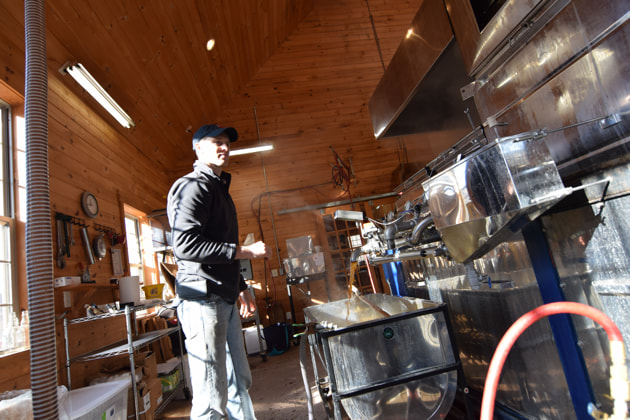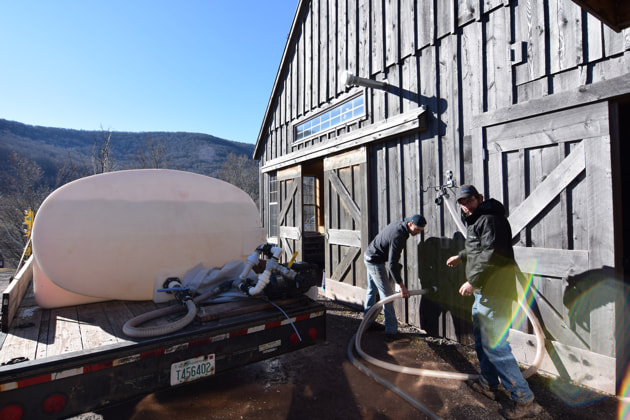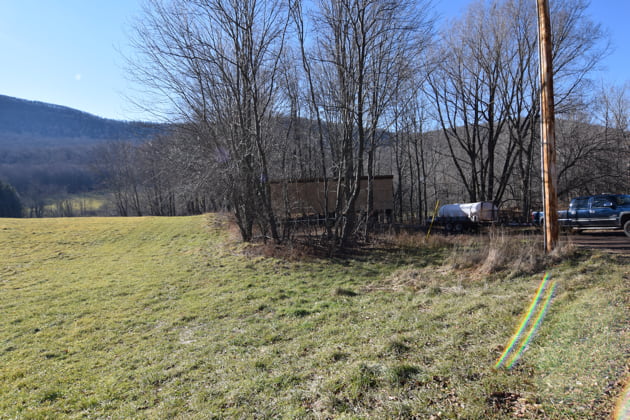Tapping & Tubing
November tappers might go again
Holscher family made a ton last Nov.
By PETER GREGG | OCTOBER 25, 2018
HOBART, N.Y.—With the calendar turning to November, some sugarmakers are getting ready to start their season.
“We might do about 2500 next week,” said Ben Holscher of Roxbury Mountain Maple in the Catskills region of New York.
Last year the Holschers tapped November 15.
Their effort was not necessarily part of a “fall tapping” experiment, but rather to get a very early start on the 2018 sugaring season.
“We’ve been tapping earlier and earlier in January anyway,” said Ben Holscher, 28, one of eight siblings in the Holscher family. “So what’s it going to hurt going a month or so earlier than that? Might as well.”
“Yeah, it’s been weird,” said Dave Holscher, family patriarch, during a boil last Dec. 6. “We’ve had better sap weather the past three weeks then we did all last year during sugaring season.”
In their valley, November and early December gave them a long three week stretch of perfect freezing nights in the 20s and daytime highs in the 40s.
Trees were gushing.
The Holschers only tapped about a quarter of their total sugarbush, approximately 6,700 taps in a lower bush of all Red maples.
Their first boil was Nov. 27. By Dec. 6, during a tour for The Maple News, they were already over 500 gallons of all dark or very dark syrup.
They were surprised by the production. It took three or four days of freezing nights and warm days before the sap finally started to run. When it did, the trees did pretty well, producing about 1.8 percent sugar on average. But gave them darker grades then they expected to see.
“We thought we’d have a lot more Golden since it’s first run, but it didn’t work out that way,” Dave said.
The decision to get going early was a pretty easy one for the Holschers.
“We didn’t see any negatives to it,” Ben Holscher said.
He said by getting tapped and operating so early, he was making best use of amortized equipment.
“We are spreading out the costs,” he said.
He was also getting through any kind of problems or equipment tweaks that inevitably come during the start-up phase of the season. Equipment dealers and people to make repairs are much more available in late fall than at the beginning of the season, when there’s an industry-wide rush to production.
The Holschers are also producing fresh product when they need it most—during the holidays.
“This all comes during our busiest selling season,” Ben Holscher said.
The family is a regular fixture in the New York City farmers markets at the World Trade Center and Union Square. They also had a six week stint selling product at Rockefeller Center.
“We’re almost out of Golden and were almost out of Amber and we’re getting low on Dark,” Dave Holscher said, assessing his inventory with three weeks to Christmas.
Another big reason for the early start was to help build up an inventory of a new collateral product—permeate.
The Holschers have a contract with Asarasi bottled water, a new company packaging and distributing RO permeate water and marketing it as “tree filtered.”
Asarasi owner Adam Lazare worked out a deal with the Holschers to take their permeate water. They plan on delivering about 8000 gallons from the fall production.
Lazare has worked out deals with sugarmakers throughout the Maple Belt, paying 10 cents per gallon.
“We wanted to help out Adam,” Ben said.
The Holschers are making a bet on an early season lasting through the traditional season, and expect their tap holes to stay open and productive through April, as long as they maintain high vacuum on the pipeline.
Over at the Arnott Forest research center at Cornell University in Ithaca, N.Y., researcher Stephen Childs also had fairly decent results during a fall tapping experiment in 2016.
“We tapped 1,200 in November and they were still flowing when we pulled them on the 13th of April,” Childs said. “They were still wet.”



































